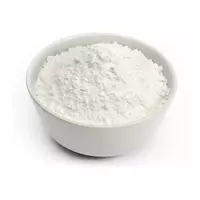Modified starch

When referring to modified starch, many people immediately think about the danger that can come from genetically modified foods. However, modified starch has nothing to do with foods that are produced from cell-altered or gene-altered natural raw materials. True, in fairness, it is worth noting that many of today's food manufacturers make both conventional and modified starch from potatoes or corn, which have undergone a cellular modification process.
Therefore, conversations about the safety or harm of modified starch for humans are natural and logical. As defined by the Food Additives Expert Commission established by the World Health Organization (WHO), modified starch is an improved food starch whose characteristics are altered by processing the product through chemical, biochemical, physical, as well as combined processes. The starting material for the preparation of modified starch is considered to be a well-known amylose polysaccharide or starch (C6H10O
5) n.
Modified starch is a product that is produced by exposing a conventional starch to various chemicals to produce a finished compound with predetermined characteristics and properties. In the chemical industry, the process of producing modified starch is referred to as saccharification or conversion of the starting material to glucose. There are a sufficient number of methods and methods for producing modified starch, a substance which is actively used in cooking.
In addition, modified starch is considered a food additive that prevents the formation of lumps in the finished food product. In cooking, modified starch is used as a baking powder or baking powder. Modified non-odorous starch having a crumbly consistency is used to make powdered sugar. There are several types of modified starch that are used in the food industry:
thermally split and modified starch;
liquid boiling modified starch;
swelling modified starch is used for making sauces, mayonnaise, as well as yoghurts, salad dressings and ketchups. swellable modified starch can be called the most popular type of product that is widely used in the food industry.
This kind of modified starch is perfect for making bakery and confectionery products, as well as sweets, puddings, desserts, cakes and cakes. Modified starch is included in meat and sausage products. It is noteworthy that modified starch helps food manufacturers "hide" the shortcomings of the source material. For example, meat subjected to long-term storage and deep freezing can be returned to its original taste and consumer characteristics using modified starch.
Harms of modified starch
In the food industry, there is an extensive list of about 20 items that are not prohibited from using varieties of modified starch. All types of modified starch used in the food industry have passed the necessary tests and tests. It is believed that the presence of harm to modified starch for a living organism is excluded. Doctors and scientists assure that neither modified starch nor food starch made from genetically modified raw materials can cause significant harm to the human body.
modified starch 328.9 kCal
Energy value of modified starch (Ratio of proteins, fats, carbohydrates - ju):
Proteins: 1 g (~ 4 kCal)
Fats: 0.6 g (~ 5 kCal)
Carbohydrates: 85.2 g (~ 341 kCal)
Energy ratio (bj | y): 1% | 2% | 104%
 Español
Español Français
Français Português
Português Русский
Русский 简体中文
简体中文 繁體中文
繁體中文 日本語
日本語 한국어
한국어 العربية
العربية Türkçe
Türkçe Қазақ
Қазақ Deutsch
Deutsch Italiano
Italiano Українська
Українська
